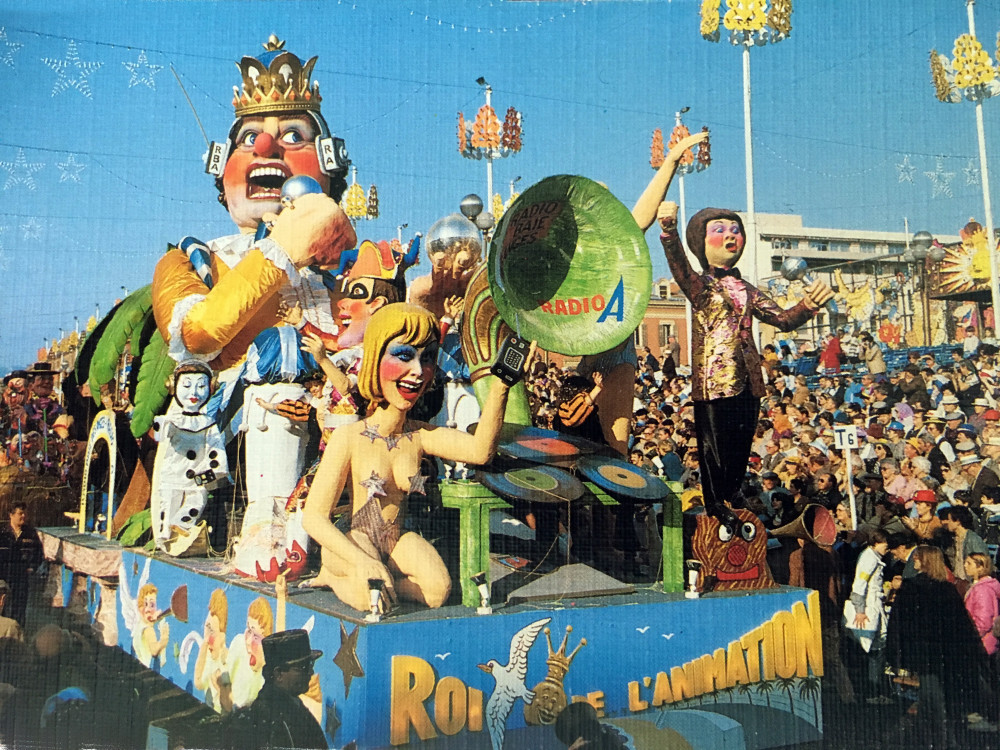Nice Carnival France History And What To Expect
It is the winter season's focal point in Nice Carnival France. The sun is rising higher in the sky, the days are growing longer, and spring is beginning to feel more real. The Nice Carnival is a yearly celebration that begins in February and concludes shortly after Fat Tuesday.
Author:Velma BattleReviewer:Michael RachalApr 04, 202210.7K Shares672.2K Views

It is the winter season's focal point in Nice Carnival France. The sun is rising higher in the sky, the days are growing longer, and spring is beginning to feel more real. The Nice Carnival is a yearly celebration that begins in February and concludes shortly after Fat Tuesday. In between are parades with floats and flowers, as well as a slew of free activities for children and neighborhood celebrations. However, Carnival in Nice is mostly a spectator sport. It is not customary for those who do not participate in organized activities to wear masks or costumes.
What Is The Nice Carnival In France?
The Nice Carnival is France's largest and one of the most famous in the world. It is held annually in February and is one of the most popular events on the French Riviera, attracting hundreds of thousands of spectators each year.
History Of The Nice Carnival
The Nice Carnival first appeared in history in 1294. Certainly, throughout the Middle Ages, Nice participated in European Carnival customs, when the celebrations preceding Ash Wednesday provided a chance for the oppressed peasant class to mock the aristocracy. The masks and disguises shielded them from prosecution for what would have been a beheading charge under normal circumstances. Naturally, things got out of hand, and the Church stepped in, chasing Carnival revelers indoors.
Why Is Nice Carnival Celebrated In France?
In 1830, the public festival resumed to honor visiting nobility and continued as a yearly free-for-all in which people pelted each other with flour and eggs. The Nice Carnival in its contemporary form dates all the way back to 1873, when painter Alexis Mossa created grotesque, absurd creatures and mounted them on floats. Although conflict has disrupted the Carnival on multiple occasions, it has persisted to this day.
Carnival Events
Each carnival features parades of floats focusing on a particular subject, and the floats frequently, but not always, have subtle political implications. Throughout the Carnival season, parades take place three or four afternoons or evenings a week. The majority of parades are free. Along with the floats, there is the "Bataille des Fleurs," during which floats adorned with precisely placed flowers glide through the streets while young men and women throw flowers at the audience. Admission to the Bataille des Fleurs is always free. The final weekend of the Carnival features the "Bartenders Race," and the Carnival King is burned in the sea on the final night, followed by fireworks. He'll be returning the following year!
Practicalities
Each year, the parade path varies slightly but often includes a procession halfway up the Promenade des Anglais. A ticket is required for certain marches and all Bataille des Fleurs events. The most costly tickets include seating in the tribunes set up along the Promenade des Anglais, while the cheapest tickets include standing along the parade route. Tickets can be purchased at the Nice Tourist Office or at stalls set up along the Promenade des Anglais.
Don't Buy Tickets In Advance!
For international visitors to Nice, the safest choice is to purchase standing tickets in Nice on the day before or day of the event to avoid unpleasant shocks caused by erratic weather. There are various billetteries/ticket offices/kiosks dotted throughout, albeit they are not always in the locations shown on the map, nor are they always open-remember, this is La France, where the establishment encourages people to work less!
Take a stroll along the stretch of the Promenade du Paillon opposite the large wheel and you'll come to a wooden tourist office adjacent to the massive rectangular fountain area. They sell tickets there, are quite pleasant and informed, communicate in English, and are open when the kiosks are closed!
Naturally, the main tourist office offers tickets as well. It's roughly 100m east of McDonald's and the Casino on the Promenade des Anglais (across the road from the promenade).
If you truly require a seat, wait until the weather prediction for that day indicates a possibility of rain of less than 10%. Forecasts for up to five days are extremely dependable in Nice, but less so for ten days. If your event is canceled, you can switch it or receive a refund, but it will be a significant inconvenience.
Parade Of Lights, Non Merci!
They had a peek from the outside at the Corso Carnavalesque illuminé to determine whether it was worth paying to enter. That was not the case. Essentially, it had the same floats as the afternoon Corso Carnavalesque (that's our favorite Mantis lit up) with some fairly spectacular illuminations, but it was quite chilly at 7C (hey! that's considered near freezing on the Côte d'Azur!) and, worst of all, the Massena seats were subjected to an over-amplified pundit shrieking incoherently. paid on a per-word basis, apparently. If you'd paid for a seat there, you'd have taken serious measures. As is, they simply walked away.
Conclusion
It is a major festival on the French Riviera and dates all the way back to ancient times when pagans celebrated the winter solstice. They would celebrate the end of winter, the entrance of spring, and the harvest with debaucherously and riotous revelry.

Velma Battle
Author
Travelling Expert

Michael Rachal
Reviewer
Travelling Expert
Latest Articles
Popular Articles

